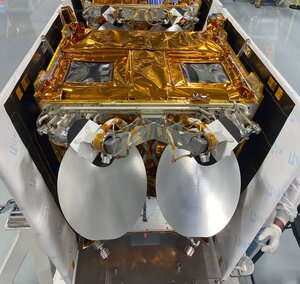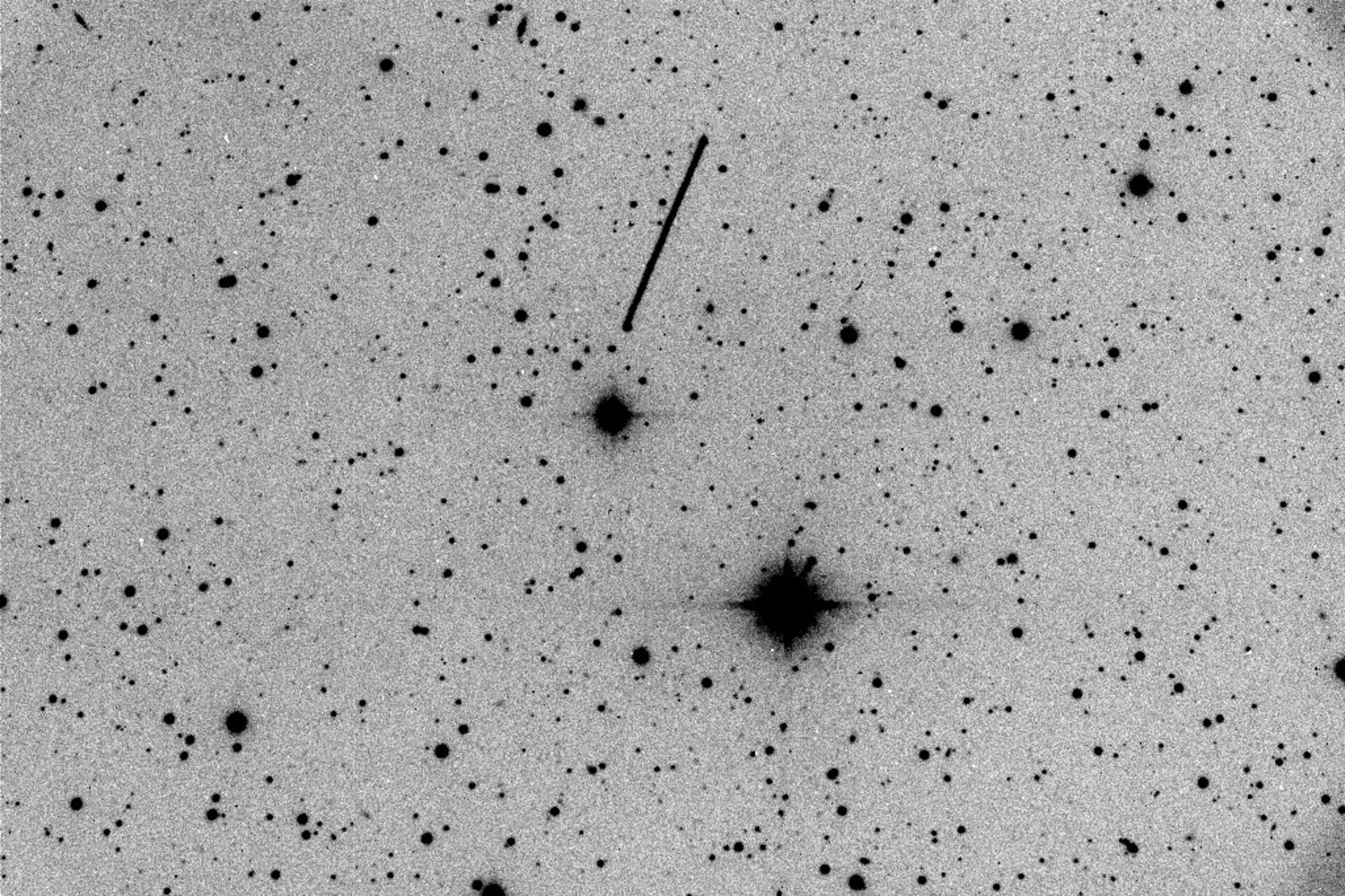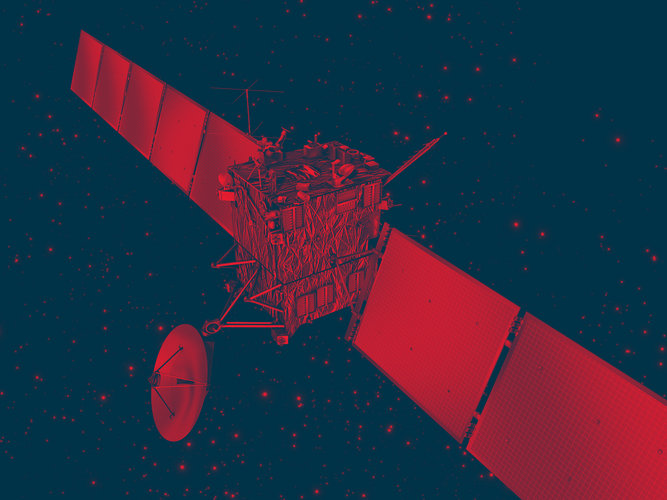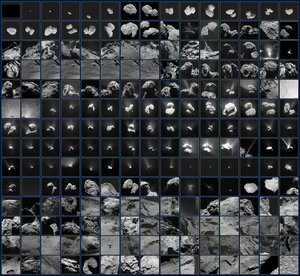Debris of the Solar System: Asteroids
Our tiny corner of the Universe – the Solar System – is home to one star, eight planets and dozens of planetary satellites. It also contains countless asteroids and comets – the debris of the cosmic construction site that created the planets and their moons.
The majority of Solar System asteroids populate the main asteroid belt, lying between the orbit of Mars and Jupiter. However, asteroids can also be found wandering in other areas of the Solar System, sometimes in the vicinity of planets.
On its journey to Comet 67P/Churyumov-Gerasimenko Rosetta also flew by two asteroids at close quarters so that scientists could gain new insights into the events that took place 4600 million years ago, during the birth of the Earth and its planetary neighbours.
Rosetta’s asteroid fly-bys
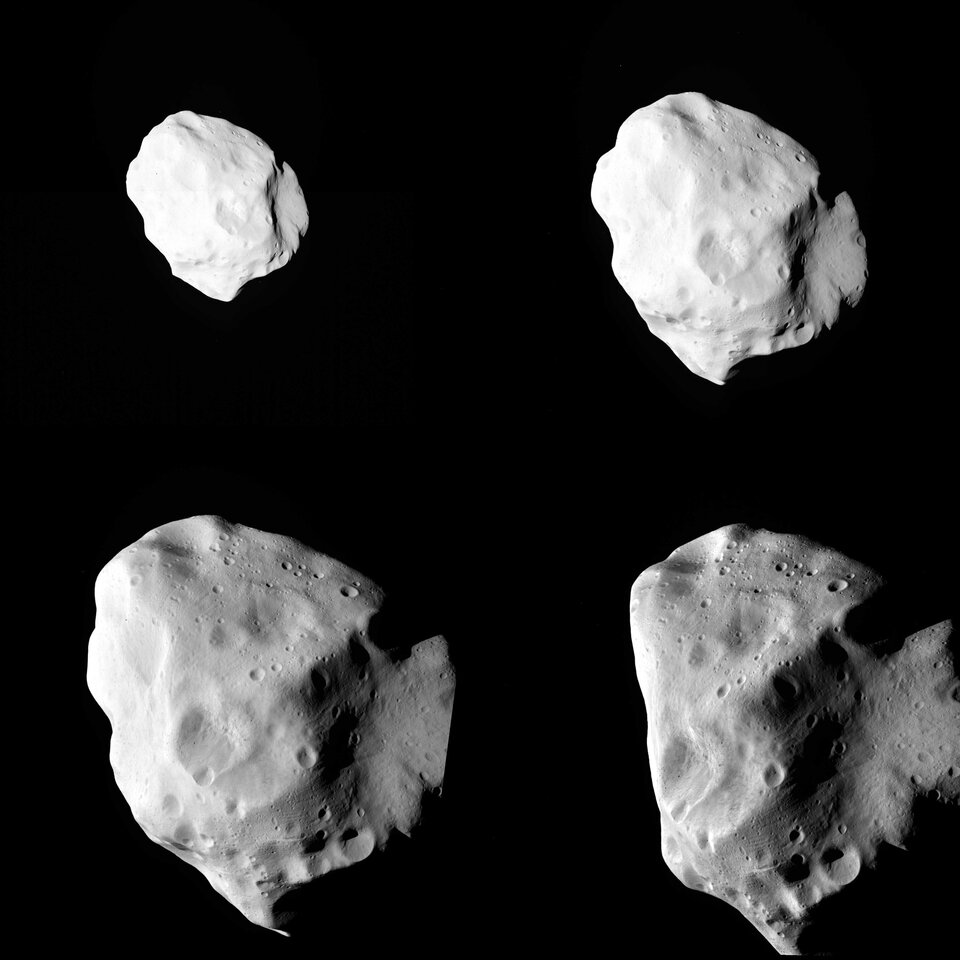
It journeyed through the main asteroid belt and obtained a wealth of science data as it flew past the two asteroids:
Asteroid types
Asteroids are very different in shape and size (ranging from a few kilometres to more than 100 kilometres), as well as in their composition. Rosetta provided information on the mass and density of the asteroids, telling us more about their bulk composition. It also measured their subsurface temperature and looked for gases and dust around them.
Based on their albedo, or reflectivity (a white, perfectly reflecting surface has an albedo of 1 whereas a black, perfectly absorbing surface has an albedo of 0), spectral characteristics and similarities to known types of meteorites, asteroids are classified into at least 14 different classes, whereby the following three major types occur:
C-type (carbonaceous)
- More than 75% of known asteroids
- Very dark, with an albedo of 0.03-0.09
- Similar to carbonaceous chondrite meteorites
- Composition is thought to be similar to the Sun, depleted in Hydrogen, helium, and other volatiles
- Inhabit the main belt's outer regions
S-type (silicaceous)
- About 17% of known asteroids
- Relatively bright with an albedo of 0.10-0.22
- Composition is metallic iron mixed with iron- and magnesium-silicates.
- Dominate the inner asteroid belt.
M-type (metallic)
- Includes most of the rest of the known asteroids
- Relatively bright, albedo of 0.10-0.18
- Pure nickel-iron composition
- M-type asteroids inhabit the main belt's middle region
In addition to these major types there are several less common types of asteroids.
Steins is an E-type asteroid, which is defined by a high albedo and a featureless spectrum. They resemble the characteristics of the Aubrite meteorites and are believed to have suffered at least partial melting. Steins therefore may be a fragment of a larger asteroid that fragmented a long time ago.
| Mission | Asteroid | Date of observation | Distance and speed | Type | size |
|---|---|---|---|---|---|
| Galileo | |||||
| (951) Gaspra | 29 October 1991 | 1600 km at 8 km/s | S-type | 18.2 x 10.5 x 8.9 km | |
| (243) Ida | 28 August 1993 | 2391 km at 12.38 km/s | S-type | 56 x 24 x 21 km | |
| Dactyl (Ida's satellite) | 1.6 x 1.4 x 1.2 km | ||||
| NEAR Shoemaker | |||||
| (253) Mathilde | 27 June 1997 | 1212 km at 9.93 km/s | C-type | 60 km diameter | |
| (433) Eros | 23 December 1999* | S-type | S-type | 33 x 13 x 13 km | |
| Deep Space 1 | |||||
| (9986) Braille | 29 July 1999 | 13 500 km, 15.5 km/s | V-type | 2.1 x 1 x 1 km | |
| Stardust | |||||
| (5535) Annefrank | 2 Nov 2002 | 3100 km at 7.4 km/s | S-type | 6.6 x 5.0 x 3.4 km | |
| Hayabusa | |||||
| (25143) Itokawa | 12 November 2005** | S-type | 540 x 180 m | ||
| Rosetta | |||||
| (2867) Steins | 5 September 2008 | about 800 km at 8.62 km/s | E-type | 4.6 km diameter | |
| (21) Lutetia | 10 July 2010 | 3000 km at 15 km/s | M-type | 95 km diameter |
* arrival 23 December 1999, touch down 12 February 2001
**12 November 2005 (touch down for sampling)















 Germany
Germany
 Austria
Austria
 Belgium
Belgium
 Denmark
Denmark
 Spain
Spain
 Estonia
Estonia
 Finland
Finland
 France
France
 Greece
Greece
 Hungary
Hungary
 Ireland
Ireland
 Italy
Italy
 Luxembourg
Luxembourg
 Norway
Norway
 The Netherlands
The Netherlands
 Poland
Poland
 Portugal
Portugal
 Czechia
Czechia
 Romania
Romania
 United Kingdom
United Kingdom
 Slovenia
Slovenia
 Sweden
Sweden
 Switzerland
Switzerland


















